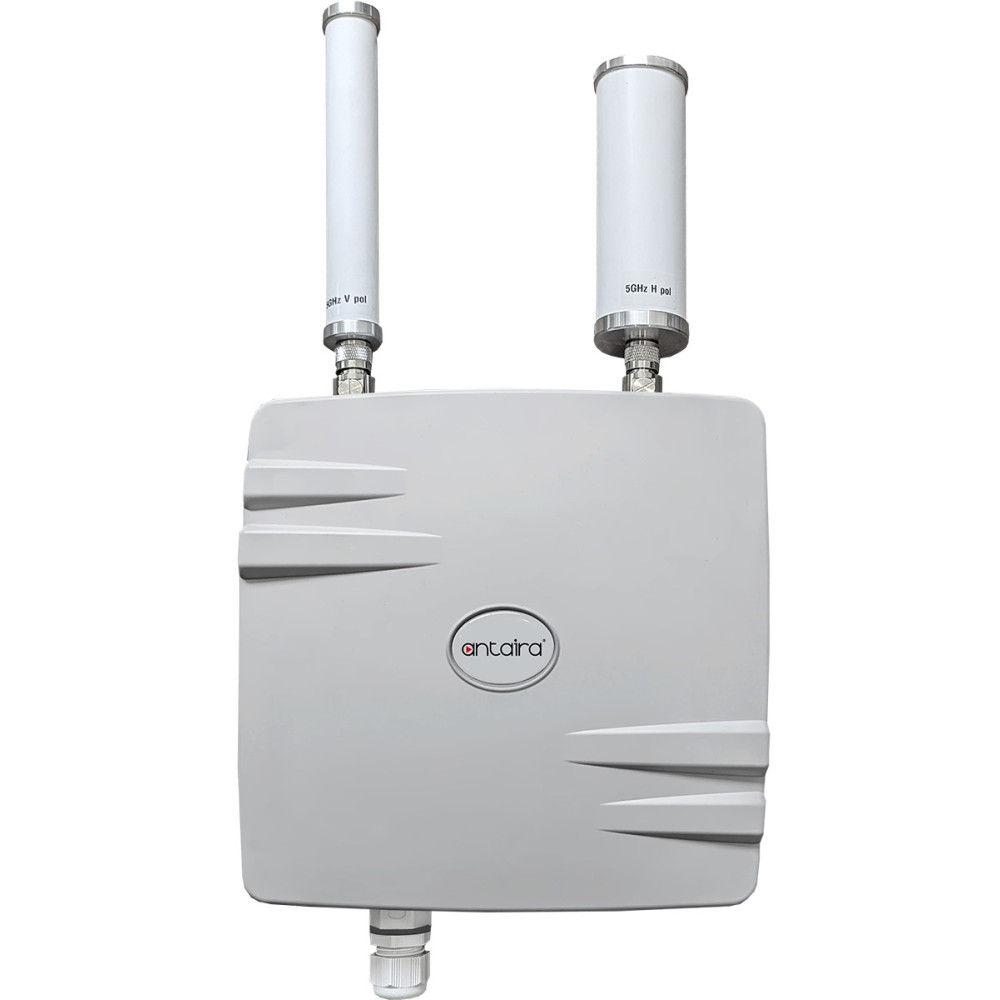It’s a wireless world— at least that’s how it feels for most people. In cities and towns of all sizes, wherever someone goes, devices work by connecting effortlessly to a wireless network. Even when a WiFi network isn’t available, most people can use their smartphone as a hotspot that their devices can connect to.
Of course, in many remote and rural locations, this isn’t exactly the case. And even where wireless seems effortless, even magical, dig just a little deeper and there’s a whole lot of effort powering that effortless experience. It all works thanks to wireless access points connected to a wired or cellular Wide Area Network (WAN). These industrial-grade and outdoor-rated Wi-Fi access points enable “consumer connectivity,” and they also make possible a new generation of secure smart devices, such as surveillance cameras, license plate readers, and Internet of Things (IoT) sensors.
Key Takeaways
- Wireless access points (WAPs) are essential for streaming video across both fixed and mobile networks.
- Outdoor-rated and industrial-grade APs support demanding applications like LPR systems, surveillance cameras, and mobile deployments.
- Devices like the Antaira AIROLINX-6, Peplink AP Pro AX, and Proxim MP-10100S offer speed, ruggedness, and security for diverse environments.
- Reliable wireless connectivity reduces bandwidth bottlenecks and enhances real-time performance in smart cities, transit systems, and high-traffic zones.
Where are Wireless Access Points Used for Video?
- Businesses, organizations, and municipalities utilize wireless access points in various public and private settings.
- WiFi access points are essential for connecting user devices to the internet.
- Use cases include indoor and outdoor infrastructure, where wireless access points connect the general public, select groups of users, or IoT devices like video cameras.
Wireless Access Points for License Plate Recognition
A growing application for industrial-grade outdoor wireless access points is license plate recognition (LPR). Video systems mounted on light poles can often tap into existing power and data infrastructure. Although even permanently deployed devices may be wireless, deploying a wireless access point can be a secure and straightforward way to connect multiple devices in a specific area, with a range of several kilometers that covers more space than many users expect.
Mobile LPR systems need a different approach. Like their permanently installed siblings, mobile LPR systems require a method to transmit photos and video content from the device itself to one or more destinations. However, they are commonly deployed on police vehicles, and the video is stored locally until it’s offloaded over a cellular network or to a WiFi access point.
Surveillance Cameras Need Reliable High-Speed Network or Wireless Coverage
Another technology driving the need for greater wireless connectivity is video surveillance. Camera technology continues to evolve, moving from analog and tape-based video to high-definition, 4K, wireless cameras that connect to the cloud. A new generation of AI-powered surveillance cameras does even more, providing real-time insights on what appears in surveillance footage.
Of course, streaming video takes up a substantial amount of bandwidth. The higher the video quality, the more bandwidth is necessary, and additional smart services add even more bandwidth requirements.
Adding to the need for bandwidth: most surveillance scenarios require many cameras, not just one. And each Wi-Fi or cellular-based camera essentially doubles the bandwidth necessary to move footage effectively from point A to point B (or multiple points).
Mobile Technology Needs Mobile Connectivity
Other video applications are even more mobile, as cameras are moved and redeployed in various locations. However, some video technologies actively record video as vehicles and personnel move through the world. Police dashboard cameras and body cameras are one example. Individual devices with cellular connectivity can utilize cellular networks to transmit and upload data, but these networks are not always sufficient in every situation and location.
Mobile wireless access points can operate effectively while traveling on buses, trains, and vehicles. A multipoint wireless system like this provides a point of connectivity for end-user and IoT-type devices. Still, that point of connection must be paired with an LTE or 5G cellular interface to obtain Internet service.
Highlighted Wireless Access Points for Streaming Video
At Westward Sales, we strive to meet the needs of every customer and every application, regardless of complexity or demand. These three industrial Wi-Fi access points solve many of the challenges that today’s businesses, agencies, and municipalities face regarding streaming video over wireless networks.
Power, Speed, and Versatility: Antaira AIROLINX-6
The Antaira AIROLINX-6 is as close to an all-in-one solution as it gets: it’s a wireless access point, a client, a bridge, a repeater, and a router all in one, featuring external dual-plane omnidirectional antennas. It has the option to swap in other high-gain antenna types for varying scenarios.
The AIROLINX is also fast and robust, offering up to 2400 Mbps on the 5 GHz band and supporting 128 concurrent client connections, with up to 1000 associated devices. Extremely temperature-resistant, the AIROLINX operates from -40°F to 167°F and withstands wind speeds of up to 125 mph.

Rugged Affordability: Peplink AP Pro AX
The Peplink APP-AX-IP67 2×2 MU-MIMO WiFi 6 Access Point is designed with ultimate rugged performance in mind. Solve the challenges of factories, construction sites, harbors, and other similarly challenging environments and enjoy office-like internet speeds and quality. This Wi-Fi access point is mesh-capable, allowing you to blanket larger buildings and sites with reliable, seamless coverage. Waterproof power and Ethernet connections meet this IP67-rated access point, delivering speeds up to 574 Mbps at 2.4 GHz and 1200 Mbps at 5 GHz.
Extreme Security, High Mobility: Proxim MP-10100S (Tsunami)
The Proxim MP-10100S (Tsunami) is an extremely secure, rugged, and highly mobile point-to-multipoint wireless system. With 256-bit AES encryption, the Tsunami MP-10100S is a popular choice for military, law enforcement, and intelligent transportation applications where security and performance are equally non-negotiable.
The system operates in unlicensed frequency bands between 4.9 and 5.925 GHz, with powerful tools to automatically detect and use the frequency band with the lowest interference. The system performs well with a data rate of up to 866 Mbps and a coverage range of up to 10 miles. The FastConnect roaming technology supports delay-sensitive multimedia applications at speeds as high as 185 mph, facilitating rapid handoffs between moving vehicles and fixed base stations.
Frequently Asked Questions: Wireless Access Points for Streaming Video
Why are wireless access points important for video surveillance?
Can wireless access points support license plate recognition systems?
What’s the difference between a WiFi extender and a wireless access point?
How much bandwidth do streaming video systems require over wireless?
Are there wireless access points designed for mobile environments?
Westward Sales Is Here for You
At Westward Sales, we understand the challenges you face with demanding wireless applications, including streaming video at scale over wireless networks. We are familiar with the landscape, the available products, and the optimal configurations for nearly any scenario. Reach out today to discuss how we can help you achieve your goals.
